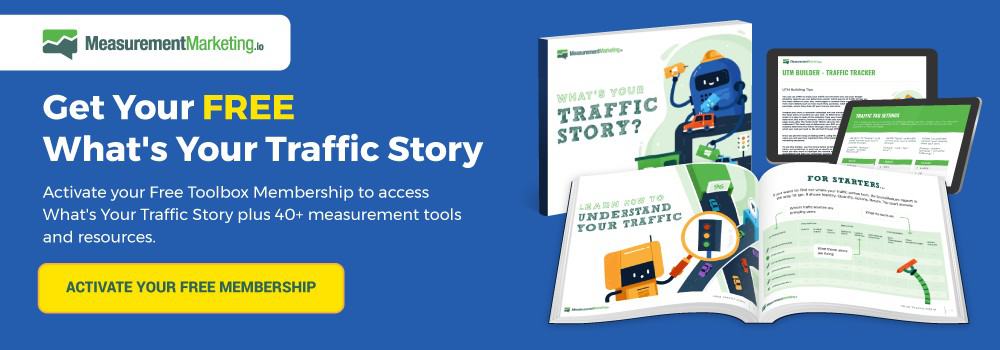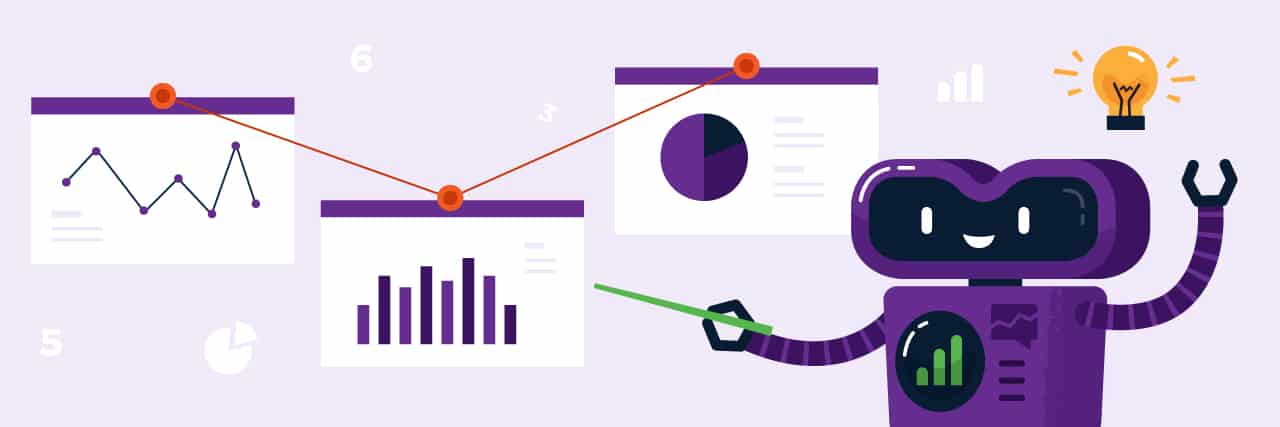“Honestly, I’m not sure we can afford to keep you on as our agency. We do not see the results we’d like from your ad campaigns.”
After winding your jaw up from the floor, a single word pounds between your ears: “Why?”
You thought your campaigns were great. You took the time to test and learn. Your ads had high relevance scores and click-through rates. What went wrong?
Whether this has happened to you or another agency you know, this situation highlights the challenge agencies have to tackle.
How do you communicate the value you provide to your client? How do you tell the traffic story in a way that demonstrates your contribution to the bottom line?
It’s not always a straight path. Let’s begin the journey by highlighting a common mistake.
(NOTE: Need help determining the story Google Analytics is trying to tell you? Get a copy of What's Your Traffic Story as part of your free “Toolbox” Membership.)

You’re Focusing on the Wrong Metric
A client’s trust is worth more than gold to agencies. But many agencies and clients focus only on the final conversion numbers in Google Analytics.
We’ve discussed the importance of telling stories using Google Analytics. When agencies don’t set up analytics to understand the real story, your clients will miss your contribution.
For example, you write up some amazing Facebook ads. Your ads take users to a landing page for your client’s lead magnet. Your conversion numbers are substantial, at 40%.
However, your client goes to Google Analytics to see the story. The story they see is that they made $15,000 in revenue from a recent email campaign to their email list. You didn’t write the email campaign. Therefore, the client thinks you didn’t contribute to that $15,000.
We both know you contributed to that revenue number. Your ads added email subscribers that later paid for your client’s product. That sounds like a contribution to me.
Unfortunately, if you don’t build Google Analytics correctly, the story of your contribution gets lost. Your client will ask, “How much money did our agency’s ads bring in?” The answer will be zero unless you connect the dots for your client.
Using Google Analytics to Measure With Purpose
Customers don’t show up at your client’s front door begging to give them money. That would be nice, but it’s not the reality.
Instead, customers are on a journey. Trust is built up with a brand over time. Then they buy the product when they’re ready to purchase and are convinced your client has the solution to their problem.
Every customer starts in a different place concerning a business. Some know they have a problem but don’t know how to solve it. Some are aware of your client’s solution but want to make sure it’s the right solution for them. About 5% are ready to buy today.
As an agency, you touch your client’s prospects in all aspects of this journey. Your contribution may come in the awareness phase. But if you don’t measure awareness, your value won’t be seen by your client.
Use the A.C.E. Model To Communicate Your Value
There are three necessary steps to any customer journey: Awareness, Completion, and Engagement. We call this the A.C.E. model.
Your Google Analytics goals should always tie back to one of these steps. Every ad, landing page, checkout page, blog post, or web page has a purpose. Measure that purpose to tell the story of your contribution to the client’s bottom line.
Let’s use an example to solidify the concept. Your client has an online course (similar to our Measurement Marketing Academy) and wants to sell a bunch of them. They hire you to get traffic with Facebook ads.
You could start building Facebook ads and spraying them across the Internet with gusto. However, you’ll end up with a situation like the one we had at the start of this post.
Instead, stop and set up your A.C.E. goals with the client. Answer these questions:
- How do we know when someone is aware of the product?
- How do we know when someone has engaged with our content?
- How do we know when someone has completed the purchase?
First, create your A.C.E. goals as destination goals in Google Analytics. Using targets for each stage, you’ll be able to tell the story of how a prospective customer learned about the brand, engaged with the brand, and finally, what made them purchase the product.
Facebook ads are designed to build awareness and grow your base of leads. Make sure the client knows how your Facebook ads fulfilled that purpose.
Then you can retarget those who visited your content or landing page with get them to engage with the brand. Maybe the first ad shows them a blog post. The second ad shows them a lead magnet. Then they join the email list.
Finally, the prospect clicks on a link in an email and makes the purchase. The email didn’t make the sale alone. There were a series of touchpoints before the final decision to purchase.
With A.C.E. goals, you can connect the dots for your client and tell the story of how your agency contributes to the bottom line.
“As you can see, Mr. Client, our ads made 500 people aware of your product this week. Out of these 500, 120 joined your email list. Then 40 purchased your product. Our ads contributed to 40 new sales of your product.”
Now your client knows exactly how much value you bring to the table. A plan based on your A.C.E. goals, made before you create ads, allows the story to flow naturally in conversations with your client.
The “Story in a Box” Google Analytics Report
The Source/Medium report lets you know where users come from and how they’re interacting with your website. However, it’s a bit limited in showing the interactions between traffic sources. You can’t connect the dots with the Source/Medium report.
You have A.C.E. goals created. You have UTMs set, so Google Analytics understands where traffic originates. The last piece is a report that ties them all together and tells the story.
Enter the Assisted Conversions Report. You can find this report under Conversions -> Multi-Channel Funnels -> Assisted Conversions.
The Assisted Conversions report shows you the steps the customer took on the way to purchasing a product.
When you click the “Source/Medium” link next to “Primary Dimension,” you can show the sources of your traffic in the Source/Medium. This view allows you to pinpoint the types of traffic that contribute to your awareness, engagement, and completion goals.
In the top left of the report, a dropdown allows you to filter the report by specific goals you’ve created.
Now your story can be told about the client’s specific goals. You’ll build trust and credibility by showing your contribution to their goals.
You’ll also be able to tell which traffic sources are contributing to sales and which aren’t. If your client is paying money on Facebook ads and “facebook/cpc” doesn’t show up as a source on the assisted conversions report, those ads aren’t giving your client a return on their investment.
Using the Assisted Conversions report gives you the raw material you need to tell the story of your contribution.
More advanced agencies can use Google Data Studio to build dashboards to tell the story more effectively. But the Assisted Conversions report is an appropriate starting point for putting your story together.
Storytelling Tips For Agencies
Hopefully, we gave you some food for thought. Connecting the dots for clients is essential to consistent success as an agency.
Before we go, let’s review some actionable tips you can start using today.
- Measure for sales, but also measure for awareness
- Create goals using the A.C.E. model before you begin collecting data
- Use the Assisted Conversions report to see how traffic sources contribute to your client’s bottom line
- Use short attribution windows (no more than three days). If users don’t interact with your client’s brand within three days, remove them from your audience.
- Retarget those users who do interact with your client’s brand to see if they move from awareness to engagement.
- Forecast your expected results (based on your client’s industry and history) and measure against the forecast
Measuring for awareness and engagement, instead of only measuring conversions, will build a story you can tell to your clients.
Tell them exactly how you contributed to the bottom line. Demonstrate your value. Your clients will be excited to continue working with you instead of calling you in for uncomfortable meetings.
To get started, check out the What's Your Traffic Story tool. Find out where your customers engage and where you can help build awareness of your client’s products.
Connect the dots for your client, and you’ll have a client for life.
(NOTE: Need help determining the story Google Analytics is trying to tell you? Get a copy of What's Your Traffic Story as part of your free “Toolbox” Membership.)

